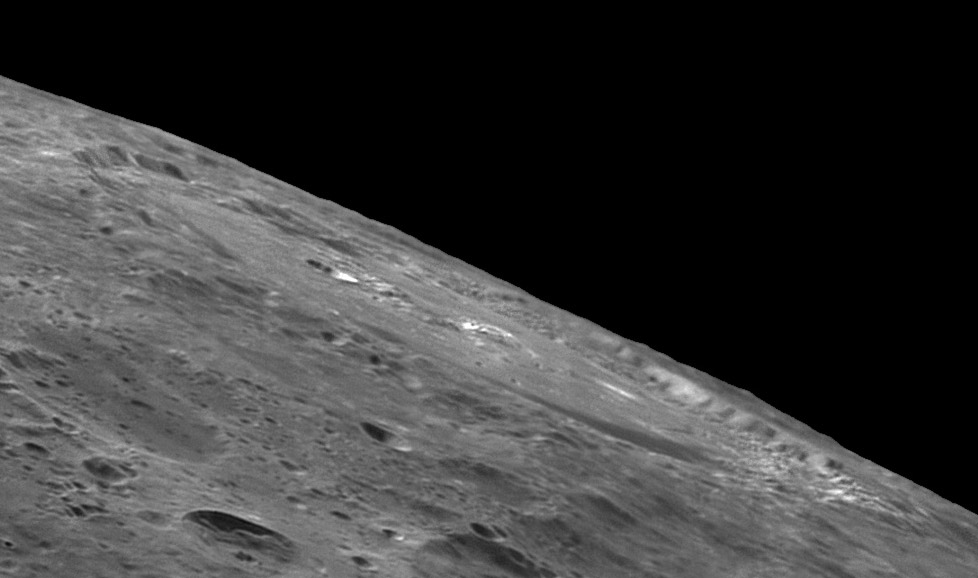Difference between revisions of "February 15, 2011"
| Line 1: | Line 1: | ||
__NOTOC__ | __NOTOC__ | ||
=Wallology= | =Wallology= | ||
| − | |||
<!-- ws:start:WikiTextHeadingRule:0:<h1> --> | <!-- ws:start:WikiTextHeadingRule:0:<h1> --> | ||
<!-- ws:start:WikiTextLocalImageRule:6:<img src="/file/view/LPOD-Feb15-11.jpg/201784560/LPOD-Feb15-11.jpg" alt="" title="" /> -->[[File:LPOD-Feb15-11.jpg|LPOD-Feb15-11.jpg]]<!-- ws:end:WikiTextLocalImageRule:6 --><br /> | <!-- ws:start:WikiTextLocalImageRule:6:<img src="/file/view/LPOD-Feb15-11.jpg/201784560/LPOD-Feb15-11.jpg" alt="" title="" /> -->[[File:LPOD-Feb15-11.jpg|LPOD-Feb15-11.jpg]]<!-- ws:end:WikiTextLocalImageRule:6 --><br /> | ||
| − | <em>image by [mailto:dpeach_78@yahoo.co.uk Damian Peach], U.K.</em><br /> | + | <em>image by [mailto:dpeach_78@yahoo.co.uk" rel="nofollow Damian Peach], U.K.</em><br /> |
<br /> | <br /> | ||
A strong libration lets us peek around to the farside, and rotates craters Earth-ward so we can see more of their floors. <br /> | A strong libration lets us peek around to the farside, and rotates craters Earth-ward so we can see more of their floors. <br /> | ||
| Line 11: | Line 10: | ||
would be a great obstacle if you happened to be on the floor of the crater and needed to get out. But the left wall is <br /> | would be a great obstacle if you happened to be on the floor of the crater and needed to get out. But the left wall is <br /> | ||
lower and the wall between seems very much lower and probably full of passes that would permit entry and exist. An<br /> | lower and the wall between seems very much lower and probably full of passes that would permit entry and exist. An<br /> | ||
| − | oblique perspective [http://www.lpod.org/?m=20060206 view] from another direction - nearly from the opposite side - shows that the low spot is where <br /> | + | oblique perspective [http://www.lpod.org/?m=20060206" rel="nofollow view] from another direction - nearly from the opposite side - shows that the low spot is where <br /> |
Humboldt overlapped a pre-existing crater (perhaps). The variation of wall heights and shape demonstrate that crater <br /> | Humboldt overlapped a pre-existing crater (perhaps). The variation of wall heights and shape demonstrate that crater <br /> | ||
wallology is a complex subject and we can hypothesize but probably never be able to explain every detail of a crater's <br /> | wallology is a complex subject and we can hypothesize but probably never be able to explain every detail of a crater's <br /> | ||
| Line 19: | Line 18: | ||
was difficult to understand even if you did.<br /> | was difficult to understand even if you did.<br /> | ||
<br /> | <br /> | ||
| − | <em>[mailto:tychocrater@yahoo.com Chuck Wood]</em><br /> | + | <em>[mailto:tychocrater@yahoo.com" rel="nofollow Chuck Wood]</em><br /> |
<br /> | <br /> | ||
<strong>Technical Details</strong><br /> | <strong>Technical Details</strong><br /> | ||
| Line 26: | Line 25: | ||
<strong>Related Links</strong><br /> | <strong>Related Links</strong><br /> | ||
Rükl plate [http://the-moon.wikispaces.com/R%C3%BCkl+60 60]<br /> | Rükl plate [http://the-moon.wikispaces.com/R%C3%BCkl+60 60]<br /> | ||
| − | The Lunar Orbiter [http://planetarynames.wr.usgs.gov/images/Lunar/lac_99_lo.pdf mosaic] of this area is poor - I await an LRO WAC mosaic to decide if the low spot is due to an <br /> | + | The Lunar Orbiter [http://planetarynames.wr.usgs.gov/images/Lunar/lac_99_lo.pdf" rel="nofollow mosaic] of this area is poor - I await an LRO WAC mosaic to decide if the low spot is due to an <br /> |
overlapped crater or some other oddity - it doesn't look like an oblique impact.<br /> | overlapped crater or some other oddity - it doesn't look like an oblique impact.<br /> | ||
<br /> | <br /> | ||
<hr /> | <hr /> | ||
Revision as of 21:12, 4 January 2015
Wallology

image by " rel="nofollow Damian Peach, U.K.
A strong libration lets us peek around to the farside, and rotates craters Earth-ward so we can see more of their floors.
But as Damian's image of Humboldt shows, an unfavorable libration presents a nearly profile view of crater walls. We
see the scarp-like wall on the right without vertical exaggeration and realize that is is an imposing feature. In fact, it
would be a great obstacle if you happened to be on the floor of the crater and needed to get out. But the left wall is
lower and the wall between seems very much lower and probably full of passes that would permit entry and exist. An
oblique perspective " rel="nofollow view from another direction - nearly from the opposite side - shows that the low spot is where
Humboldt overlapped a pre-existing crater (perhaps). The variation of wall heights and shape demonstrate that crater
wallology is a complex subject and we can hypothesize but probably never be able to explain every detail of a crater's
rim structure. This reminds me of a conclusion of a volcanologist who had observed the construction of a volcanic cone
over its few year lifetime. He said that there were so many events, big and small, that contributed to the development of
the cone that no one could possibly deduce exactly how the cone had formed who had not seen it happening - and it
was difficult to understand even if you did.
" rel="nofollow Chuck Wood
Technical Details
Feb 8, 2011, 17:55 UTC.
Related Links
Rükl plate 60
The Lunar Orbiter " rel="nofollow mosaic of this area is poor - I await an LRO WAC mosaic to decide if the low spot is due to an
overlapped crater or some other oddity - it doesn't look like an oblique impact.



